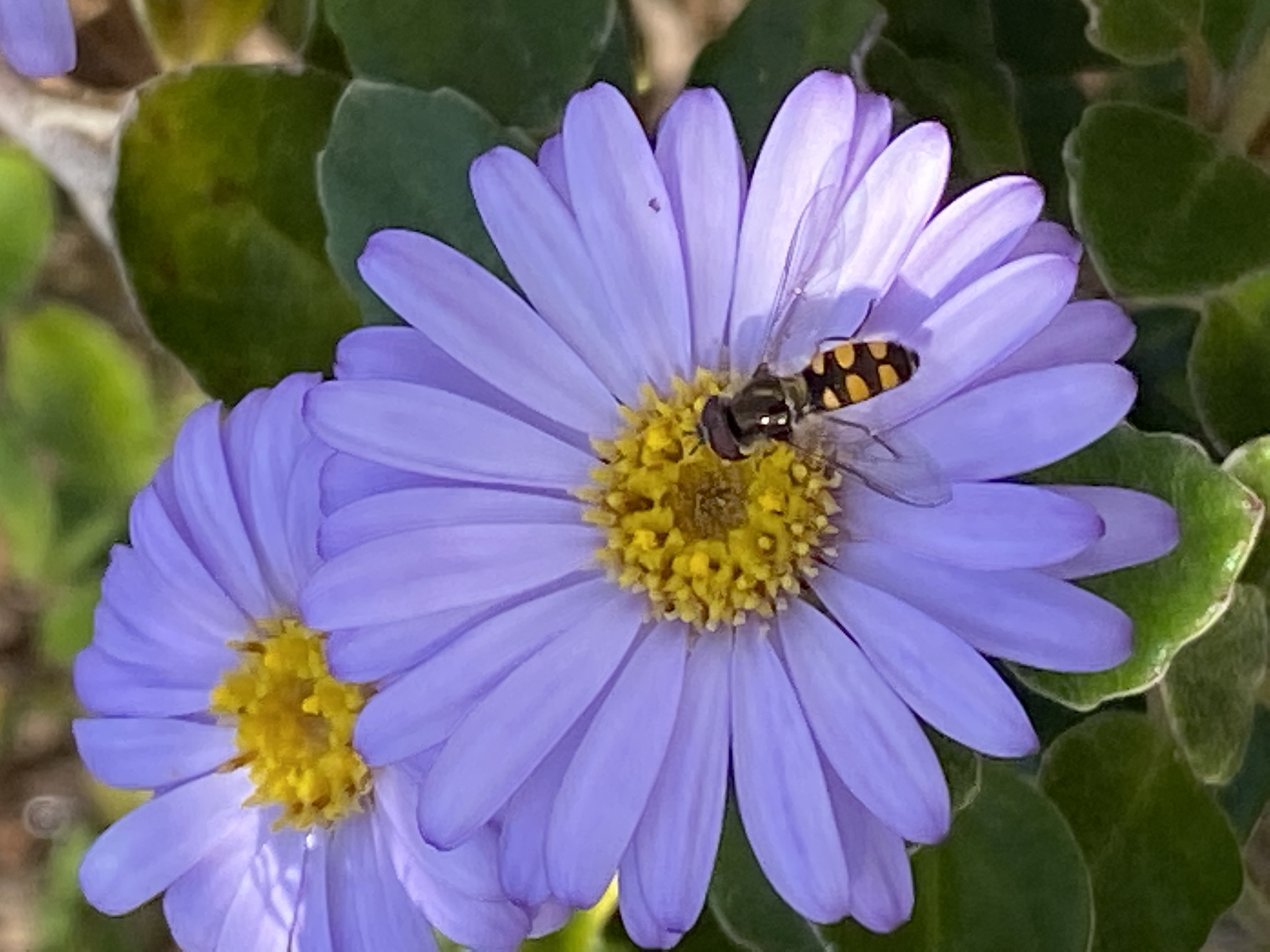Olearia Tomentosa on:
[Wikipedia]
[Google]
[Amazon]

 ''Olearia tomentosa'', commonly known as the toothed daisy-bush, is a species of flowering plant in the family
''Olearia tomentosa'', commonly known as the toothed daisy-bush, is a species of flowering plant in the family

 ''Olearia tomentosa'', commonly known as the toothed daisy-bush, is a species of flowering plant in the family
''Olearia tomentosa'', commonly known as the toothed daisy-bush, is a species of flowering plant in the family Asteraceae
The family Asteraceae, alternatively Compositae, consists of over 32,000 known species of flowering plants in over 1,900 genera within the order Asterales. Commonly referred to as the aster, daisy, composite, or sunflower family, Compositae w ...
and is endemic to south-eastern continental Australia. It is a spreading shrub with egg-shaped leaves, the edges toothed or lobed, and blue or white and yellow, daisy-like inflorescence
An inflorescence is a group or cluster of flowers arranged on a stem that is composed of a main branch or a complicated arrangement of branches. Morphologically, it is the modified part of the shoot of seed plants where flowers are formed o ...
s.
Description
''Olearia tomentosa'' is a spreading shrub that typically grows to a height of up to about and has its branchlets densely covered with rust-coloured hairs. The leaves are arranged alternately along the stems, egg-shaped, long, wide on a petiole up to long. The edges of the leaves are toothed of lobed, the lower surface densely hairy. The heads or daisy-like "flowers" are arranged singly or in small groups on a peduncle up to long, each head in diameter with a bell-shapedinvolucre
In botany, a bract is a modified or specialized leaf, especially one associated with a reproductive structure such as a flower, inflorescence axis or cone scale. Bracts are usually different from foliage leaves. They may be smaller, larger, or of ...
long at the base. Each head has 12 to 33 white or blue ray florets
This glossary of botanical terms is a list of definitions of terms and concepts relevant to botany and plants in general. Terms of plant morphology are included here as well as at the more specific Glossary of plant morphology and Glossary o ...
, the ligule A ligule (from "strap", variant of ''lingula'', from ''lingua'' "tongue") is a thin outgrowth at the junction of leaf and leafstalk of many grasses (Poaceae) and sedges. A ligule is also a strap-shaped extension of the corolla, such as that of a ...
long, surrounding 30 to 90 yellow disc florets. Flowering mainly occurs from September to December and the fruit is a ribbed achene
An achene (; ), also sometimes called akene and occasionally achenium or achenocarp, is a type of simple dry fruit produced by many species of flowering plants. Achenes are monocarpellate (formed from one carpel) and indehiscent (they do not ope ...
about long, the pappus long.
Taxonomy
This daisy was described in 1798 by German botanistJohann Christoph Wendland Johann Christoph Wendland (July 17, 1755 – July 27, 1828) was a German botanist and gardener born in Petit-Landau, Alsace.
Family
His son, Heinrich Ludolph Wendland (1791–1869), and his grandson, Hermann Wendland (1825–1903), ...
who gave it the name ''Aster tomentosus''. In 1836, Augustin Pyramus de Candolle
Augustin Pyramus (or Pyrame) de Candolle (, , ; 4 February 17789 September 1841) was a Swiss botanist. René Louiche Desfontaines launched de Candolle's botanical career by recommending him at a herbarium. Within a couple of years de Candol ...
changed the name to ''Olearia tomentosa''. The specific epithet
In taxonomy, binomial nomenclature ("two-term naming system"), also called nomenclature ("two-name naming system") or binary nomenclature, is a formal system of naming species of living things by giving each a name composed of two parts, bot ...
(''tomentosa'') means "covered with matted hairs", referring to the underside of the leaves.
It is the type species of the genus, and was placed in the section ''Dicerotriche'', yet genetically is sister to the section ''Asterotriche''.
Distribution and habitat
Toothed daisy-bush is found south of theHastings River
Hastings River ( Birpai: ''Doongang''), an open and trained intermediate wave dominated barrier estuary, is located in the Northern Tablelands and Mid North Coast districts of New South Wales, Australia.
Course and features
Hastings River rise ...
and inland as far as the Blue Mountains in eastern New South Wales, and east of Mallacoota Inlet in the far east of Victoria. It grows on sandstone-based soils in dry sclerophyll forest and heath.
Ecology
''Olearia tomentosa'' plants are generally killed by bushfire, though there are reports of plants regrowing from suckers after fire.Use in horticulture
Not commonly seen in cultivation, ''O. tomentosa'' grows in soil with good drainage in a sunny or part-shaded location. Regular pruning prevents the plant from becoming leggy, and can rejuvenate older plants. The species is moderately frost-hardy.References
{{Taxonbar, from=Q7086014 tomentosa Asterales of Australia Flora of New South Wales Flora of Victoria (Australia) Plants described in 1798 Taxa named by Johann Christoph Wendland